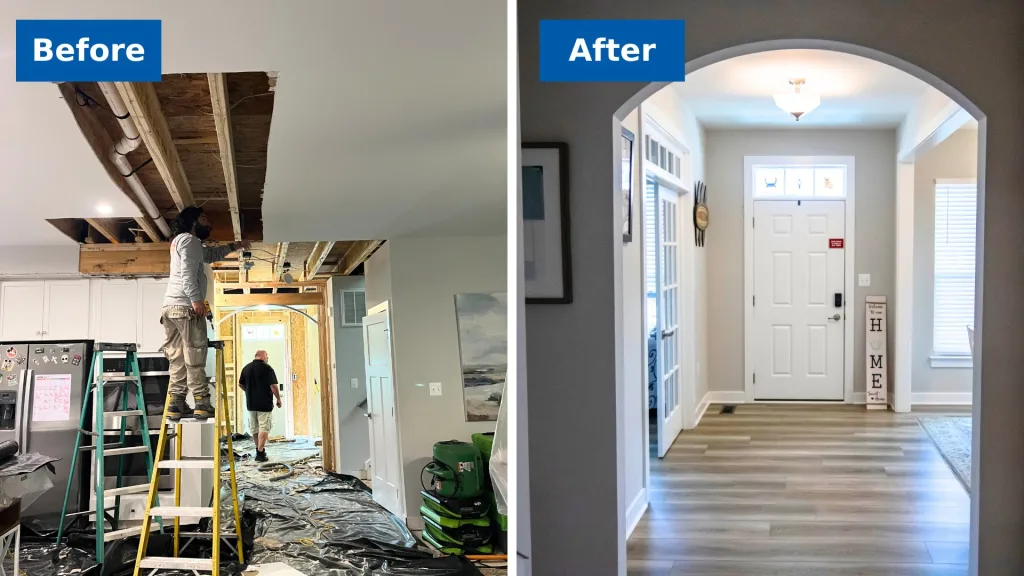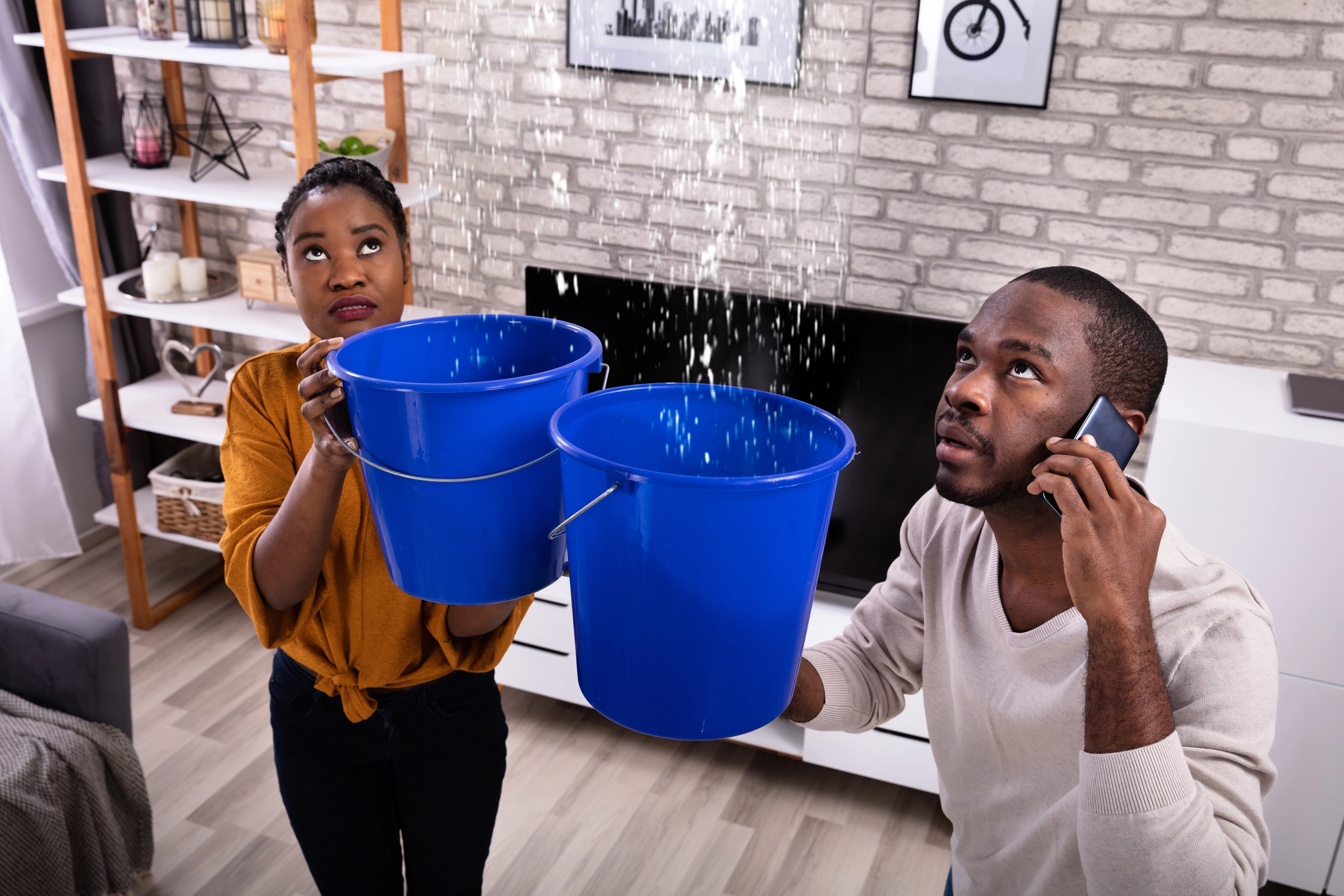Crucial Steps to Comply With for Efficient Water Damages Reconstruction in your house
When faced with water damage in your home, recognizing the important actions for efficient restoration can make all the distinction. You require to evaluate the damage and warranty safety and security before taking on the trouble. Quiting the source of water is crucial, yet it's just the start. As soon as you've handled that, there's a series of actions you need to require to secure your building from additional issues. Allow's discover what you need to do following.
Analyze the Damage
When you uncover water damages in your home, the initial step is to assess the damage completely. Beginning by recognizing the resource of the water intrusion. Look for leakages, burst pipelines, or various other issues triggering the trouble. Next, examine the impacted areas for visible signs of damages, consisting of mold and mildew, bending, or discoloration development. Do not neglect to search in surprise spots like behind walls or under flooring, as water can permeate right into these areas unnoticed.Document the damages by taking clear images and notes. When discussing the circumstance with your insurance policy service provider or repair professionals, this will certainly aid you. Focus on the kind of products impacted, as different materials require different restoration strategies. Lastly, examine the extent of the damages. Is it minor or considerable? Comprehending the scope will guide you in determining whether to manage it on your own or employ the professionals for an extra extensive repair procedure.

Make certain Security
Prior to you start any kind of restoration job, guaranteeing your safety is essential. Initially, assess the problem of your home. If the water's deep or if you notice electrical hazards, do not enter the location. Turn off the power and gas supply to avoid mishaps. Use safety gear like handwear covers, boots, and masks to secure on your own from impurities or mold.It's essential to stay aware of your surroundings; look for sharp things and unsafe surface areas. Treat it as dangerous waste if the water is from a sewage back-up. Maintain children and pet dogs away from affected locations to prevent exposure.Once you have actually taken these precautions, you can wage the remediation procedure. Remember, your safety and security precedes, and if you're ever unclear, it's finest to seek advice from an expert. Taking these steps will certainly help assure you prepare to tackle the reconstruction securely and successfully.
Quit the Source of Water
After ensuring your safety, the next step is to stop the resource of water. Identify where the leak is originating from. Maybe a ruptured pipeline, a malfunctioning home appliance, or perhaps hefty rain going into via a harmed roofing. Turn off the major water supply to your home to avoid additional flooding if it's a pipes problem. For devices, unplug them and turn off their water system valves.If the source is outside, like rain, attempt to divert it far from your home utilizing sandbags or other barriers. For small leakages, you could be able to utilize tape or a sealer momentarily up until an expert can repair it. Remember, addressing the resource quickly is important to lessening damages and avoiding mold growth. As soon as you have actually stopped the water, you'll be in a better placement to proceed to the next action in the restoration procedure.

Eliminate Excess Water
Act promptly to remove excess water, as standing water can lead to much more considerable damages and mold and mildew growth. Initially, gather your devices: a wet/dry vacuum cleaner, pails, and towels. If the water is superficial, you can use towels to absorb the dampness. For much deeper water, a wet/dry vacuum cleaner is your best choice. Make certain to clear the vacuum cleaner regularly to stay clear of overflow.If the water is contaminated, like from a sewage back-up, put on safety equipment, consisting of handwear covers and masks, to maintain yourself risk-free. Once you have actually gotten rid of as much water as possible, look for covert pockets of wetness in corners and under furniture, as these can harbor mold.Don' t neglect to switch off electrical devices and power electrical outlets in damp locations to stop risks. This first action is crucial in decreasing damages and setting the phase for an effective restoration process.
Dry and Dehumidify the Location
Once you've eliminated the excess water, it's important to dry and dehumidify the area completely. Beginning by utilizing dehumidifiers effectively to draw wetness out of the air and protect against mold and mildew development. Watch on humidity levels to guarantee the area dries out totally.
Get Rid Of Standing Water
To efficiently tackle water damage, you require to concentrate on getting rid of standing water as swiftly as feasible. Beginning by gathering needed tools, like a wet/dry vacuum cleaner or a pump, relying on the volume of water. A vacuum cleaner should do the method if the water is shallow. For bigger amounts, a pump is more effective. While functioning, make sure to put on protective gear to maintain on your own secure from impurities. As you get rid of the water, focus on concealed areas like under furnishings or in corners where water may collect. Your area will certainly begin to dry out as soon as you've removed the majority. This action is vital, as lingering water can bring about mold development and a lot more substantial damages.
Use Dehumidifiers Successfully
Just how can you efficiently make use of dehumidifiers to dry and dehumidify your room? Start by putting your dehumidifier in the most damaged location, ideally where water damage is most severe. Ensure to shut all doors and windows to create a sealed atmosphere. Transform on the dehumidifier and established it to the appropriate humidity degree, typically around 30-50%. Empty the water collection storage tank frequently, or think about using a model with a continual drain alternative for benefit. If feasible, make use of fans to boost airflow, helping the dehumidifier job extra efficiently. Keep the dehumidifier running up until you're positive that the area is completely dried, preventing mold growth and added damage (Water Damage Repair). This step is important for effective water damages remediation
Display Moisture Levels
Surveillance moisture levels is important during the drying process, as it aids ensure your room stays complimentary from excess wetness. Purchase a reputable hygrometer to track humidity properly. Ideally, you want to preserve levels between 30% and 50%. If humidity analyses climb check here over this array, you might need to adjust your dehumidifiers or followers to enhance airflow. Examine the readings regularly, specifically in areas vulnerable to wetness, like basements or restrooms. If you observe persistent high moisture, consider raising air flow or utilizing extra dehumidifiers. Remaining on top of these degrees not only speeds up the drying out process but also protects against mold and mildew growth, guaranteeing your home remains secure and comfortable.
Clean and Disinfect Affected Surfaces

Recover and Repair Your Home
After cleaning and decontaminating the influenced areas, it's time to recover and fix your home. Begin by assessing the damage. Look for structural issues, like damaged wall surfaces or floors, and address any type of needed fixings. Changing damaged drywall or flooring is crucial for both visual appeals and safety.If your furniture or belongings were influenced, think about whether they can be restored or need replacement. Tidy or professionally bring back items where possible.Next, touch and paint wall surfaces up any locations that need interest. This not only boosts appearance yet also safeguards surfaces from future water damage.Don' t forget to inspect your plumbing and appliances for leaks, guaranteeing everything's operating properly. Consider mounting a dehumidifier to avoid future dampness problems. By taking these steps, you'll restore your home to its previous glory and produce a much safer living atmosphere.
Frequently Asked Questions
For How Long Does Water Damage Restoration Typically Take?
Water damages repair normally takes anywhere from a couple of days to several weeks, relying on the degree of the damages (Water Damage Cleanup). You'll desire to analyze the scenario promptly to lessen additional difficulties and assure correct repair
Will My Insurance Cover Water Damages Remediation Prices?
Your insurance could cover water damages reconstruction costs, however it depends on your plan. Examine your insurance coverage details and contact your insurance representative to clarify what's consisted of and what you need to sue.
Can I Deal With Water Damages Reconstruction Myself?
You can handle water damages remediation yourself, however it's crucial to analyze the scenario. If it's considerable, you may intend to call professionals. Always prioritize safety and security and guarantee you have actually got the right devices.
What Are the Indicators of Hidden Water Damages?
You may discover indications of covert water damage like warped walls, stuffy smells, or staining. If your floors really feel squishy or you spot mold, it's time to check out additionally prior to the situation aggravates.
Exactly How Can I Protect Against Future Water Damage in My Home?
To avoid future water damage in your home, you must routinely examine pipes, seal cracks, maintain gutters, and guarantee appropriate drainage. Mounting a sump pump and dampness obstacles can likewise help maintain your area dry. When you discover water damage in your home, the first action is to assess the damages extensively. Act rapidly to eliminate excess water, as standing water can lead to much more substantial damages and mold and mildew growth. To effectively deal with water damages, you require to focus on removing standing water as rapidly as feasible. As you eliminate the water, pay interest to concealed locations like under furnishings or in corners where water might gather. Water damages reconstruction usually takes anywhere from a couple of days to several weeks, depending on the extent of the damage.